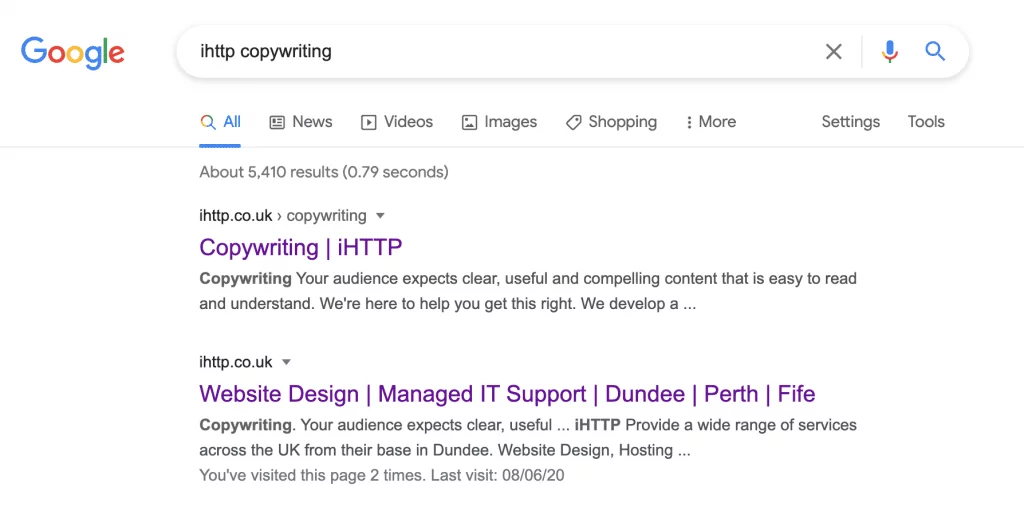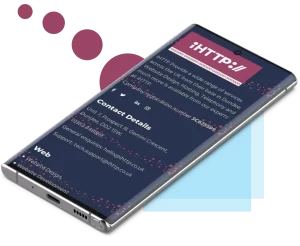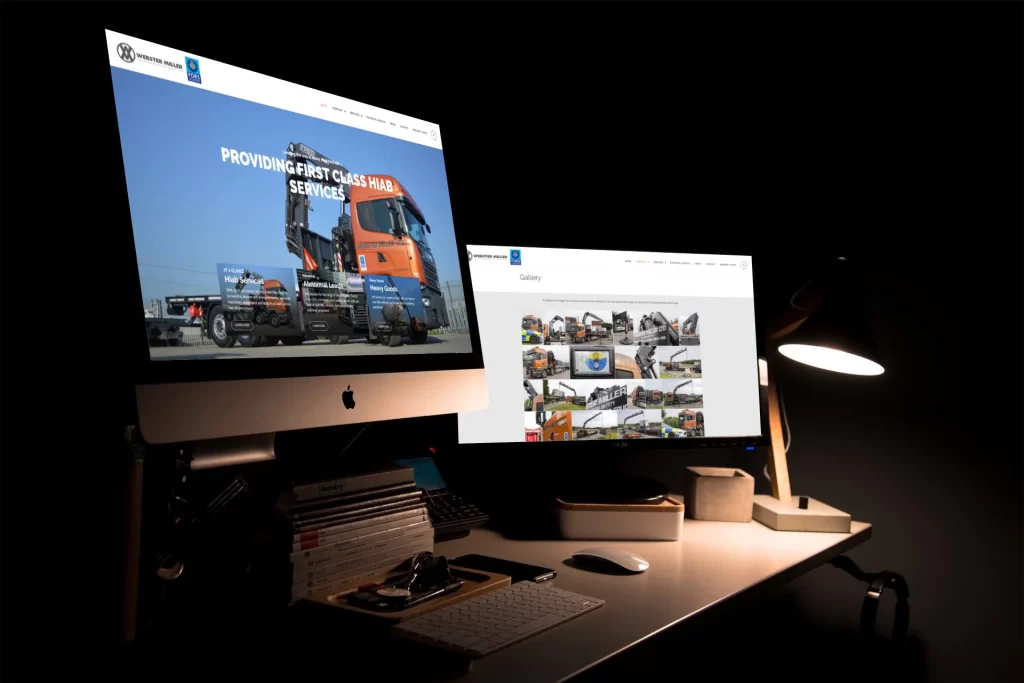Grow your business with these website improvements

Your website is a business tool. It’s one of your primary marketing assets that current and prospective customers engage with every day. But does your site reflect recent changes in your marketplace and meet your audience’s needs? Does the branding, design, and content accurately reflect your business and what you do?
While you might be pretty happy with your website as it currently stands, an effective website should constantly evolve and improve to keep up with competitors and visitors’ expectations. A website is never finished. Like all parts and practices within your business, it’s essential to review your website regularly to ensure it still meets your needs and those of your target audience.
Growing your business through your website is about removing the barriers between your target audience (i.e. prospective customers) and the action that generates income for you (calling you, filling out a form, purchasing something, signing up for an event, etc). It’s also about ensuring that the audience can discover (find) your website and that it can convince them to take those actions.
In this article, we look at the areas you can improve so you can grow your business using your existing website.
Content
Are people able to find your content? Is that content easy to read if they can find it? Will your content convince your visitor that you or what you provide will help them?
People visit websites with a specific goal in mind. It’s rare that people visit your website just to browse around (unless you run a major news site!). Your audience is nearly always searching for something to help them to achieve their goal:
- specific information or advice
- a product
- a service
- a person
Discoverable content
Great content plays a crucial role in how you optimise your site and how well it ranks in the Search Engine Results Pages (SERPs). And the higher a page’s ranking in the SERPs, the more discoverable it becomes. After all, not many people scan through the second page of results when searching Google for something. It’s all about the top ten results on the first page.
High-quality content became a decisive factor for your website’s rank popularity a long time ago, and it still should be first in terms of what you optimise. Unique content that has not already been published somewhere else and meets its audience’s needs will be ranked well by search engines.
Readable content
Once visitors have found your content, they must be able to physically see it okay, scan through it and understand it.
Not all visitors can read small grey text so it’s vital that your font size and font colour provide suitable contrast against the background of your website. This seems like a basic thing but here at iHTTP we still see websites not getting this right, even in 2021.
People don’t read on the web. That’s a strong statement to make, but it’s true. Instead of reading, they scan. They scan for individual words and phrases that they hold in their mind while trying to achieve a goal. Even though this is a blog post, you have probably scanned it instinctively with something specific in mind.
So we recommend you follow a few rules for writing for the web:
- Write in short sentences
- Ensure each paragraph contains only a single idea or point
- Break up paragraphs of text with headings and subheadings that help summarise what’s in those paragraphs
- Make extensive use of bulleted lists like this – perfect for scanning
- Provide ‘just enough’ content – long pages of text can be damaging to conversion rates (how many people take action)
Convincing content
Effective marketing content convinces the visitor to take some kind of action that becomes desirable to them. It is also desirable to you as a business owner as those actions usually led to some form of engagement or even a sale.
Understand your audience
You can write effective content by really understanding your audience and what they need. What are their goals? What are their ‘pain points’ (i.e. problems that cause them pain, stress or some kind of negative feeling)? Once you know, address those goals and problems directly.
Use their language
Use the same language your audience would use too. Don’t write formally if they typically communicate in an informal manner with you. Use phrases and terminology they would use and understand. This will help you make a connection with your reader and become even more convincing.
Use social proof
You can also use ‘social proof’ to convince people that you are already helping people like them and it’s working well. Here are some examples of social proof:
- The number of customers you currently have or the number of people you have helped in the past
- Quotes and testimonials from people who have bought your product or used your services
- Customer logos
- Case studies and whitepapers
Direct people to take action
Always encourage your visitors to take action. You can provide an enquiry form or your contact details but if you don’t encourage people to use them, your website won’t be as effective as it could be. Include plenty of call to actions throughout your site, for example, “Contact our friendly team” or “Free no-obligation quote”.
Need help writing for the web or writing compelling content? Our website copywriting service is here to help.
Mobile experience
For most businesses, mobile visitors are the most important visitors. But we still see businesses more concerned about how their site looks on desktop and treating mobile as a second-class citizen when the opposite is usually true.
Statistics show that more mobile visitors are ready to take action than desktop visitors. Mobile visitors are more likely to call you, more likely to search for your business premises and to make a purchase or enquiry.
Google already monitors the mobile experience offered by your site. It and other search engines reward (or punish) according to the speed and overall quality of that mobile experience. And changes are coming to the world of Search Engine Optimisation (SEO) which mean there will be even more focus placed on mobile experience and loading times than ever before. We’ll cover these changes in the next section of this article.
User Experience (UX)
What matters for customers is not that you neatly arrange all your products or services on a page or you have an impressive full-screen video on your homepage, but that they know what to do next.
UX means:
- Anticipating the needs of your audience
- Organising and structuring your pages so your site makes sense to your audience
- Building a people-focused approach into your website design, build, and content
- Measuring and improving based on:
- feedback (how do people feel while using your site?)
- data (what actions do they take?)
- results (why is one product unexpectedly selling more than the other, or why is no one completing our enquiry form?)
Google updates
In one of the biggest search-related updates Google have made in recent years, they stated that User Experience (UX) will become an SEO ranking signal from June 2021.
As part of this update, “page experience signals” become a ranking factor for your website. Page experience refers to how people feel as they use your website to achieve their goal. And what contributes to how people feel when browsing your site? Things like this:
- How mobile-friendly it is
- How secure the site seems (for example, does it use HTTPS?)
- How content is presented
- How quick it loads
- How often their visit is interrupted with unexpected content (for example, advertisements and pop-up windows or boxes)
 All of this means that when you improve the UX of your website, you will also indirectly be working on your SEO. That’s a great way to gain an advantage over competitors and improve the experience for your website visitors at the same time.
All of this means that when you improve the UX of your website, you will also indirectly be working on your SEO. That’s a great way to gain an advantage over competitors and improve the experience for your website visitors at the same time.
See our article, How SEO is changing in 2021 and what it means for your business, for full details on these changes and what you need to do to benefit.
Speed
Loading times play a significant part in the experience for your visitors. A slow-loading website is hugely damaging to the user experience. This is especially true and relevant for mobile visitors who often need information on demand (for example, contact details, location information) or want to make purchases (most ecommerce business happens on mobile).
A fast-loading website converts more visitors into leads and customers by quickly getting them to the content or products they need. A website that hasn’t been designed with speed in mind, however, will have potential customers turning away to find another supplier.
Although in today’s world we benefit from much faster mobile and broadband connections than ever before, today’s websites aren’t that much faster than they were ten years ago. In fact, they have become bloated with large, unoptimised images, stylesheets and scripts.
People can detect delays as short as 1/10th of a second, so anything that takes longer doesn’t feel ‘instant.’ Delays of just 1 second are enough to interrupt a person’s conscious thought process.
This ‘bloat’ can be avoided by building a website in the right way. It can be rectified on existing sites with a bit of hard work and care.
Need some help slimming down your page sizes and boosting load times on your website? We’re here to help with our website development service.
Navigation
It goes without saying that you want to ensure navigation on your website is as frictionless as possible. But many websites have inadequate, infuriating, or inconsistent navigation (sometimes all three!).
Simplicity is the key. Most sites should avoid ‘breaking the mould’ when it comes to their navigation structures. Follow existing design patterns that visitors are familiar with and they will find your key content faster.
It’s important to get the navigation structure right. This is known as the Information Hierarchy (IA). Organise your pages into sections that make sense for people. Put yourself in their shoes – how do they think and where would they expect to find specific content?
For example, don’t hide ‘Contact us’ under a section called ‘About’. But people would expect to find ‘Careers’ there.
You should also provide more than one method of navigation. Some people instinctively browse through menus to find the title of the page they need. Some people use the search facility built into most sites. And others rely entirely on Google and other search engines (but mainly Google), combining the name of your business with their search term (for example, “ihttp copywriting”).
 Design
Design
People have short attention spans and they will quickly leave a site that doesn’t capture their attention – and that’s where great design comes in.
Many businesses take a passive approach to website design. Instead of seeing their website as a unique and powerful tool that they can use to attract new customers, they see their site as a simple online brochure.
We often hear the phrase, “Let’s just get something up there”. While something is better than nothing, your website is a window into your business. It represents your brand, people and business.
Consistent branding starts with your website and is then carried through into your marketing, advertising social media activity, business stationery, printed brochures and other activities that push people to your site.
Every business and organisation has a website. But not many have a website design that is genuinely effective, memorable and user-focused. Think about the big players in any industry or sector, for example, Air BnB, Apple, the BBC, and the UK Government. All heavy investors in design with large design teams, website engineers, and design representation at board level.
By investing in your online brand and website, you can gain a competitive advantage too.
Read our article, How great website design benefits your business, for more information about the benefits design can deliver.
Accessibility
By updating your website to work for every visitor, including those with disabilities and impairments, you can widen your audience. One in six people in the UK have a disability, including over 8 million people with a visual impairment.
An accessible website is more straightforward for everyone to use.
Accessibility means thinking about your website’s readability, ease of use, and adaptability. It means your website can be used by any visitor on any device, including those who rely on assistive technology like screen readers and people with dyslexia, colour blindness and physical restrictions.
Here are some common accessibility issues:
- Low colour contrast (for example, between text and the background) makes your content hard to read for some people
- Images with no alternative text (‘alt text’) accurately describing what the image portrays for people who cannot see it
- Videos with no subtitles or text transcript that accurately describes the speech and action
- Complex navigation, forms, and other key functionality that are challenging to use for some people
- Content that cannot be quickly skipped through using a keyboard
By making changes or redesigning with accessibility in mind, all of your visitors will find your website easier to use. An increase in usability improves the chances of your website performing better as a marketing tool and business asset.
Read our article, How an accessible website benefits your business to learn more.
(Re)marketing
Paid advertising is the perfect partner for SEO which helps you organic traffic (visitors who find you through search). Use Google Ads to push customers who are searching for the services and products you offer to your website.
You can also use remarketing to target people who have visited your site but didn’t commit to submitting an enquiry or purchasing a product. Think of remarketing as a friendly reminder that you and your products or services are waiting for the visitor to come back.
Even if you have a limited budget, you will be surprised at how much quality traffic and leads you can generate using pay-per-click online advertising.
Need support improving your website?
We help businesses and organisations throughout Scotland grow their business using their website. We offer expertise in the areas we have identified in this article through our Website Design, Website Development, and Copywriting services.
Contact us today to begin the conversation about your website.


 Design
Design


